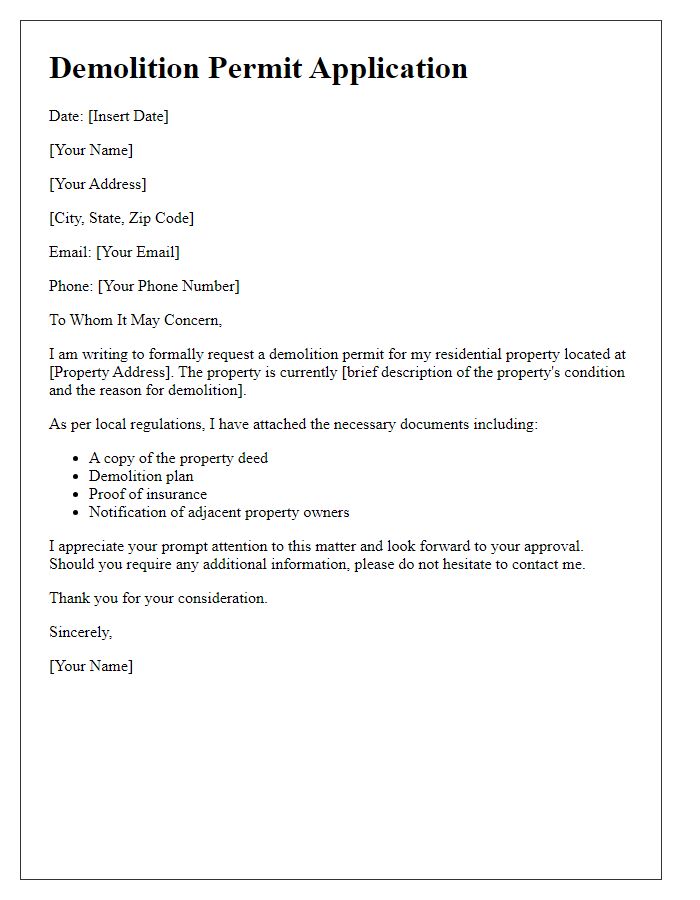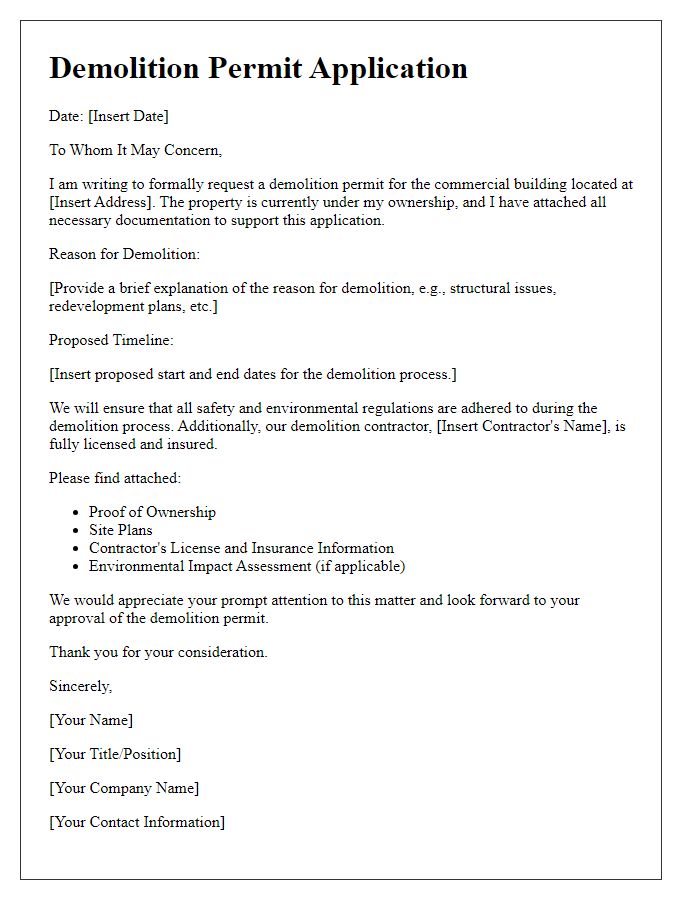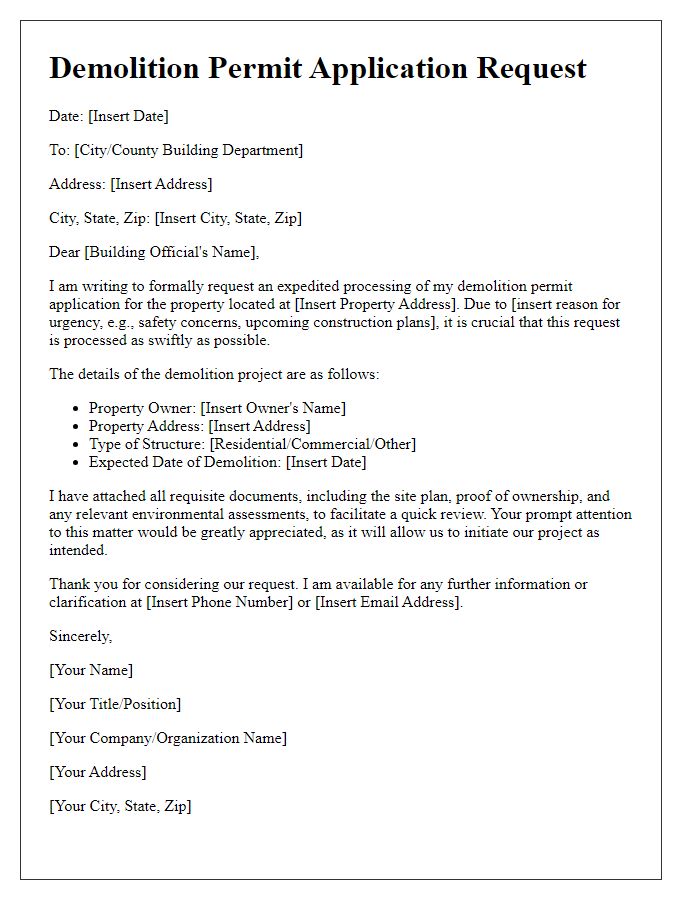Are you gearing up for a demolition project and unsure how to start with the necessary paperwork? Securing a demolition permit might seem overwhelming, but with the right guidance, it can be a breeze. In this article, we'll walk you through a straightforward letter template that will help you craft an effective demolition permit application. So, let's dive in and get your project off the ground!

Applicant Information
The applicant information section of a demolition permit application contains essential details regarding the individual or organization requesting the permit. This information typically includes the applicant's full name, often accompanied by a title such as Mr., Ms., or Dr., reflecting personal identification. Additionally, the application should provide a business name if the applicant represents an organization, along with the official business address, including street number, street name, city, state, and zip code, facilitating efficient communication with local authorities. Contact details, including phone numbers and email addresses, allow for prompt follow-up inquiries. Furthermore, the applicant's relationship to the property, such as owner, contractor, or agent, clarifies the context of the demolition request. Each detail contributes to the verification process and ensures that demolition activities comply with local regulations set forth by municipal codes or state laws governing construction and demolition practices.
Property Details
The demolition permit application requires comprehensive property details to ensure compliance with local regulations. The property address, including unit number, street name, city, and zip code, must be clearly stated. Important identifiers include parcel number or tax identification number, which are essential for accurate record-keeping by local authorities. The property type, such as residential, commercial, or industrial, should be specified, along with the current use and zoning classification. Include the size of the lot in square footage, alongside dimensions, as this impacts the scope of the demolition. Note any relevant historical designations, especially in areas with strict preservation laws. Attach a site plan illustrating the property layout, nearby structures, and any utilities that may require disconnection prior to demolition. This thorough documentation facilitates a smoother approval process and ensures compliance with safety and environmental standards.
Demolition Project Scope
The demolition permit application details the process for dismantling structures, particularly focusing on residential buildings and commercial establishments, often located in urban environments like New York City or Los Angeles. The project scope encompasses identifying structures built before 1978, which may contain lead paint, requiring specialized handling during the demolition process. Additionally, the application outlines the methods of demolition, such as selective deconstruction or mechanical demolition, addressing safety measures for managing hazardous materials like asbestos. The timeline for project completion typically spans from three to six months, including pre-demolition inspections and obtaining necessary approvals from environmental agencies. Local regulations, notably those established by the Environmental Protection Agency (EPA), dictate protocols to minimize dust and debris, emphasizing community safety and environmental protection.
Compliance with Regulations
The compliance with regulations regarding demolition permits ensures that all safety and environmental standards are met. Local building codes, often managed by municipal offices, dictate specific procedures for demolition projects, including waste disposal and structural safety measures. Regulations may require notifications to nearby residents and businesses to inform them about potential disruptions. National laws on hazardous materials, such as asbestos and lead, mandate thorough inspections prior to demolition to minimize health risks and environmental impact. Additionally, adherence to timelines established by regulatory bodies is crucial, often requiring documentation of project progress and eventual completion to maintain compliance.
Environmental and Safety Measures
Demolition permits require thorough planning to ensure environmental protection and safety compliance. The application must detail environmental measures such as dust control, noise reduction, and proper waste disposal methods, particularly for hazardous materials like asbestos, which can pose severe health risks. Safety measures must include site security protocols, signage for hazardous areas, and safety equipment for workers, following Occupational Safety and Health Administration (OSHA) guidelines. The plan should outline the handling of demolition debris, noting recycling initiatives and collaboration with local waste management services to minimize landfill impact. Regular inspections must be scheduled to ensure adherence to safety standards, supported by documentation of training for workers involved in the demolition process.
Letter Template For Demolition Permit Application Samples
Letter template of demolition permit application for residential property.

Letter template of demolition permit application for commercial building.

Letter template of demolition permit application for renovation project.

Letter template of demolition permit application for environmental compliance.

Letter template of demolition permit application for emergency teardown.

Letter template of demolition permit application with neighborhood consultation.

Letter template of demolition permit application for structural safety concerns.

Letter template of demolition permit application for land redevelopment.






Comments